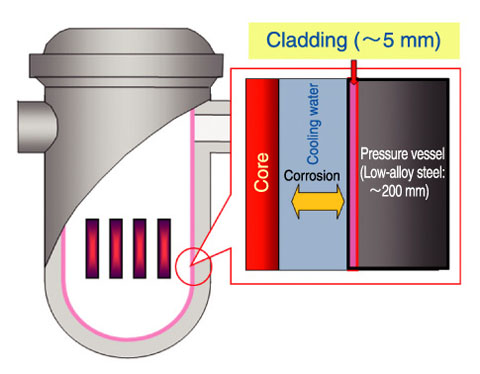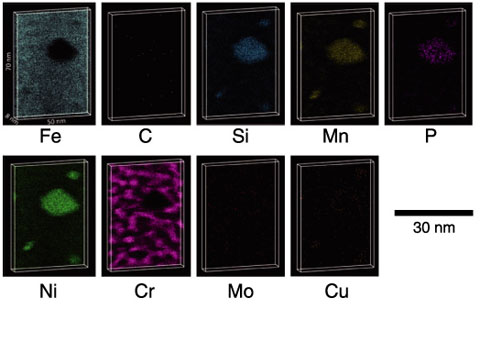
Fig.5-8 Reactor pressure vessel and cladding layer

Fig.5-9 Atom maps of the δ phase in the aged cladding
The reactor pressure vessel (RPV), which is about 200 mm thick, is a very important structural component that enhances the safety in the vicinity of the core. The RPV is made of high-toughness low-alloy steel, which is susceptible to corrosion. Therefore, the inner wall of the RPV is covered by 5-mm-thick stainless steel weld overlay cladding in order to prevent it from being corroded by the cooling water (Fig.5-8). The cladding, with a Cr content of over 11%, is resistant to corrosion owing to the formation of a passive surface layer.
The cladding consists of two metallic γ and δ phases. It is known that thermal aging causes the hardening and embrittlement of the δ phase upon long-term operation at the operating temperature of the reactors, i.e., ∼300 °C. If these changes in the δ phase lead to the formation of cracks penetrating the cladding, there might be a threat of the cooling water coming in direct contact with the low-alloy steel and corroding the RPV. For the safe operation of the reactor, it is necessary to examine its integrity. Further, for the examination of the integrity, it is necessary to have a good knowledge of the mechanisms responsible for the degradation of the cladding. We aim to perform an effect assessment of the microstructural changes in the cladding on the corrosion resistance of the RPV using the state-of-the-art three-dimensional atom probe (3DAP) technique, which is suitable for nanometer-scale analysis of objects.
The 3DAP technique enables us to observe the distribution of atoms in three-dimensional real space with nearly atomic-scale resolution. The observation of the cladding after heat treatment at 400 °C for about a year, equivalent to the operation of the reactor for a few decades, shows microstructural changes. The Si-Mn-P-Ni rich cluster and the undulation of the Cr distribution are observed (Fig.5-9). Quantitative analysis shows that the undulation has a wavelength of about 10 nm. The undulation appears to retard the formation of the passive layer, resulting in the cladding having lower resistance to corrosion. We are planning to carry out research on the relation between microstructural changes and corrosion resistance in the near future.
The results of this study are expected to be useful for the effective examination of the corrosion resistance of RPVs and for the improvement of the safety of reactors.